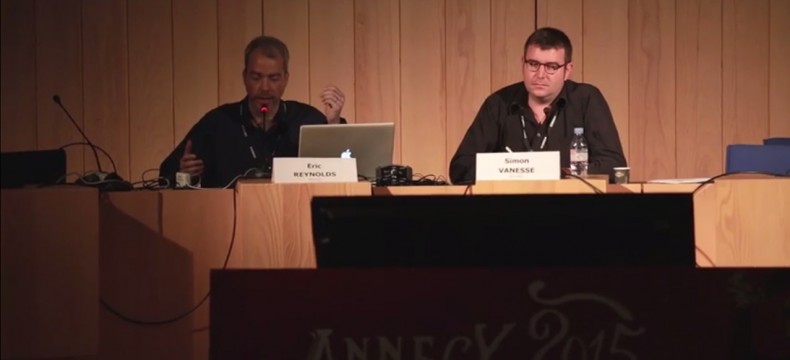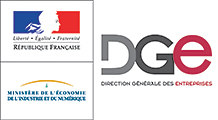2015 Conference Summaries

Weta Digital: Worlds of Characters & Creatures
Contents
This is Weta Digital's first visit to Annecy, represented by Oscar nominated Eric Reynolds, who has been working in animation since 1997. Today, he is Animation Supervisor with Peter Jackson's special effects company, which he joined in 2005 for "King Kong". Reynolds talks about his experience in special effects working on Avatar directed by James Cameron as well as Peter Jackson's "Rise of the Planet of the Apes" and "The Hobbit".
Summary
Weta Digital is located in the suburbs of Wellington and specializes in computer graphics, animation and motion capture management, now known as performance capture since James Cameron's Avatar. Usually, visual effects are created for someone else, with a director who is on the other side of the planet. Ideally the director chooses his film, the work is distributed and the role of Weta is to help in concept design.
Eric Reynolds worked on Avatar in 2005 after completing King Kong. He uses motion capture to produce real images with realistic animation and explains that as far as the architecture is concerned, form follows function and the animation follows the form. James Cameron wanted to shoot Avatar in 3D, filming in live action then turning it into CG, which at the time was a revolutionary idea. The action of the film takes place in a jungle, and by creating this entire CG universe, Weta had all the shots and moves at their disposal, which was a great asset for texture artists as all the colours could be edited.
The studio also created animals that had never been seen before with several wings. The art departments would send along drawn or clay models of the creatures, then Weta would recreate them in CG before even receiving the scenario, to work out how they should move in the film. Many models and tests were submitted to Cameron to find out the best way to proceed.
Eric Reynolds suggests finding a real animal, similar in size and shape to the animated animal you want to create, to get inspiration from its movements and then reproduce them on your creature. He took his own references from bats and birds. Pelicans were also used to work out wing movements for larger birds.
Weta has always used motion capture. All the actors had sensors on their faces that directly sent information to the computer. This helped to create references for the real actors. Weta was looking for a very realistic animation using a system based on the different facial muscles so as to be able to separate them and have all the facial expressions. Reynolds explains that it took months to regulate the same emotions between the avatar and the actor.
For Rise of the Planet of the Apes the director had never worked with animation. Many of the actors' performances and the work they did on visual expressions were used because the characters in the film didn't talk much. They chose a character with more human-like features than a chimpanzee and soon realized that eyelids were complex features. Eyes may be the mirrors of the soul but emotions are also expressed around them. There were a lot of close-ups in the film and they even used liquid to study the form water would take in the actor's eyes.
The movements of chimpanzees had to be as realistic as possible too. The team was able to take some reference film of their various lip movements by visiting Wellington Zoo. Duplicating these mouth shapes onto a human meant filming the chimps before the actors as human lips have more structure. Adding a smaller shape and detail achieved a realistic look and level of emotion.
It's not just a matter of studying how muscles move, as you can also see veins in the forehead or other movements in a human body. Chimpanzees, however, don't have these visible veins or other pointers that can help understand their emotions, so they had to use motion capture, then add textures, like the muscle systems and body hair.
Motion capture worked well for close-ups on Rise of the Planet of the Apes but not so well for movements. One scene in the film shows the monkeys in San Francisco. The team had found footage on YouTube of some escaped orangutans in a town, but they had to go to Auckland Zoo for more references of these apes. Zoo staff put objects around the cages while the orangutans were eating elsewhere. When they returned to the den, the apes took time to look at these objects and it was possible to film their movements for reference which were then animated in keyframe.
Then came the filming with actor Andy Serkis, who played Caesar. The scene was then done again without him in order to delete and replace with the monkey. Eric Reynolds wanted people to believe in talking monkeys and make them forget they were watching CGI. In the film Caesar carries the whole storyline.
Weta used a puppet manipulated by animators for King Kong. All the different parts of the puppet could move but frequently broke, so the design department installed sensors to alert when the puppet's muscular system was weakening that then turned red to warn animators that something needed to be done quickly!
Finally, the challenge for The Hobbit was to shoot a lot of footage in a very short time. The character of Gollum for example needed to look like he did in the past. Everything depended on what the director wanted, but Peter Jackson was taken up with the dialogue.
Eric Reynolds had wanted to animate Smaug, the dragon, for a long time and when this finally happened, he made a point of emphasizing the head, lips and face. The creature speaks like a human but his head is bigger than a car and there is a lot of muscle and weight to create. To make it look realistic, this size and weight had to be felt as well as creating moving horns. When the jaws were moving everything else had to move too. The goal was not to give Smaug a long dialogue, but to make a realistic visual which talks more in the film than in the book!
An eight-hour making of DVD showing what Weta Digital did on this project is soon to be released.
Question: You talked about a shot in Rise of the Planet of the Apes that you had to repaint frame by frame. Why wasn't motion control used?
• E.R.: I worked on a production using motion control and a lot of things had to be set up to make it work. We chose to film it right but never imagined that it was going to be such a big problem.
Question: Many of your shots involve keyframe. Did this exist before?
• E. R.: We wanted our studio to use things that had never been used before because it helped us tell a story. We were aware of the volume of work and motion capture was useful for the movements and action. We also used facial motion capture, but this didn't really work. We used 80% of this material but it's the final 10% which is very difficult to create and makes the whole thing realistic! We had to go back to keyframe animation, but a few years ago we would not have insisted on using it.
Drafted by Alain Andrieux, ITZACOM, France
The Annecy 2015 Conference Summaries are produced with the support of:

![]()
Conferences organised by CITIA 
under the editorial direction of René Broca and Christian Jacquemart

